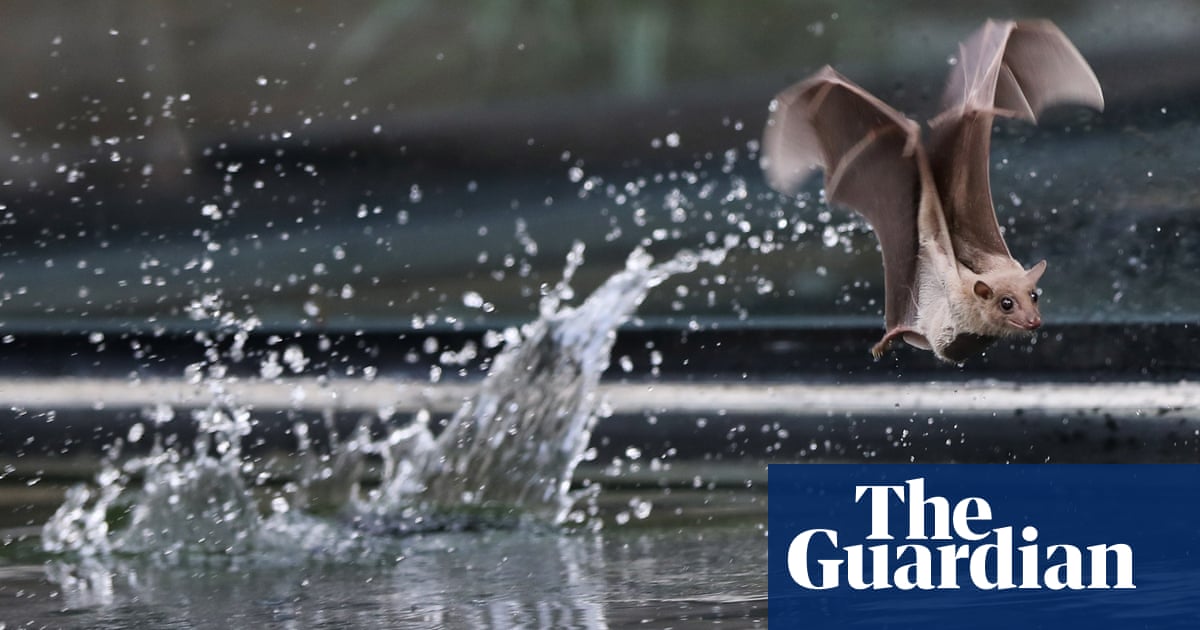
As the world’s first case of a parasitic roundworm infecting a human’s brain made headlines this week, infectious diseases experts warned the threat of novel infections is rising.
In a case report written about the Australian patient in the journal Emerging Infectious Disease, doctors who pulled the Ophidascaris robertsi larvae from her brain warned the case highlights the danger of diseases caused by viruses, bacteria, parasites and fungi passing from wildlife to humans, known as zoonotic infections.
“The occasional person developing an odd brain worm from eating greens contaminated with python faeces containing the larvae is unfortunate,” says Rowland Cobbold, the University of Queensland’s associate professor of veterinary science.
“But it’s a rare event, and if it’s treatable, that’s OK.”
What is more concerning, he says, is that about 75% of the novel and emerging infections globally are zoonotic. They often include infections with far greater impact that can lead to millions of deaths, such as the Sars-CoV-2 virus which causes Covid-19 and is believed to have emerged from bats.
“It just comes down to the fact that the human population has never been higher, and we’re all looking for places to live and food to eat and it has an impact on the environment,” Cobbold says. “And so the environment impacts us back.”
It’s an issue Dr Anthony Fauci, the former chief medical adviser to the president of the United States, warned of as he prepared to step down from the role earlier this year. In a perspective written for the New England Journal of Medicine, Fauci said: “There is no reason to believe that the threat of emerging infections will diminish since their underlying causes are present and most likely increasing.”
“The emergence of new infections and the reemergence of old ones are largely the result of human interactions with and encroachment on nature,” he wrote.
“As human societies expand in a progressively interconnected world and the human-animal interface is perturbed, opportunities are created, often aided by climate changes, for unstable infectious agents to emerge, jump species and in some cases adapt to spread among humans.”
In response to these concerns, the World Health Organization (WHO) has begun holding a series of webinars on the “One Health” approach, which emphasises the importance of different sectors such as public health, veterinary science, social science, urban design, government and environmental science working together in all aspects of society.
But WHO’s director of the department of pandemic and epidemic diseases, physician Dr Sylvie Briand, tells the Guardian this approach “doesn’t happen naturally”.
Sign up for Guardian Australia’s free morning and afternoon email newsletters for your daily news roundup
“It requires effort for each sector to talk to each other to work together,” Briand says.
“It requires sufficient financing to do those joint activities. And it requires, also, a political will to implement interventions.
“Because, for example, the killing of poultry or the killing of minx that has happened during Covid-19 to prevent the spread of a new variant also has a real cost for the economy. So it’s important that governments understand these preventive measures may be costly, but it’s much less costly than to cure [a pandemic].”
Wildlife not the ‘villain’
Since emerging disease starts, almost always, at the interface between environment, humans and animals, Briand says surveillance at this point is critical to the One Health approach.
In many cases, Briand says, diseases that jump from wildlife to humans will result in no or little further transmission. Recreating the conditions in which the Ophidascaris robertsi larvae infected a woman would be difficult, for example, since it involved a python (where the larvae usually reside) contaminating grass with the larvae through its faeces, and a human accidentally ingesting the larvae when collecting and preparing the grass for cooking.
The patient’s body then failed to kill off the larvae through an immune response, likely because she had a preexisting condition that made her immunocompromised. The parasite is also not transmitted between people, so there is no pandemic risk.
But in some cases, like with Covid-19, the virus was sufficiently fit to be transmitted to other humans after it likely spilled over to humans from bats being kept in cages at the Huanan seafood wholesale market in China. A pathogen that jumps from one species to another can sometimes exploit the new host’s lack of defences, causing disease.
“So this is to highlight that human contact with different animal species under different conditions may favour disease emergence, or at least the initial spillover from one species to another,” Briand says.
“We have seen in the past the emergence of Ebola in West Africa in remote villages in the forest, communities in contact with wild animals. The disease often starts locally in communities, and if they are not contained at this stage they can lead to epidemics.”
Countries need to identify places where emerging diseases are most likely, she says. It might mean monitoring, for example, the movement of wild animals such as foxes and bats closer to urban areas as their habitats are destroyed, or monitoring farms and piggeries close to mosquito populations that can transmit viruses to humans.
Cobbold says it also “comes down to being very careful with developments and changes in land use”.
“There really has to be very careful management of our natural resources,” he says.
“When we have urban … developing decisions being made by local governments, for example, a One Health perspective needs to be kept in mind so that we are thinking about the risks that could come with changes in land use, particularly where we’re going to interact more with wildlife.
“But I think a lot of people outside of research and health communities aren’t so aware of the One Health concept. There’s also, of course, conflicts of interest as councils want to have development and developers want to develop and people need places to live and farmers need places to farm.”
Dr Michelle Baker, a principal research scientist with the Australian Centre for Disease Preparedness, says it is critical to remember that animals renowned for triggering many emerging diseases, such as bats and birds, “play an amazing role in our ecosystem”.
“I just never like to portray wildlife as the villains here, as they play such a critical role in areas like pollination and seed dispersal,” she says.
“That’s why it’s so critical to have people from different sectors including the environment at the table when we talk about these issues. We’re becoming increasingly urbanised, and animals kind of don’t have anywhere else to go but closer to us.
“Urbanisation is our fault. Climate change is our fault. And without all of these animals, we’d be in big trouble.”












